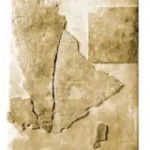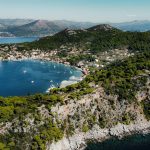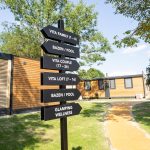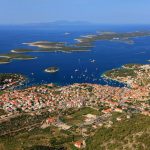After four years of renovation, the ciborium sculpted by Marko Andrijić has been returned to St. Mark’s cathedral in Korčula.
One of the greatest Renaissance masterpieces in Dalmatia has been removed from the cathedral four years ago, and it spent the last four years in Split, where it went through the restoration worth almost a million kunas. The multi-storied altar covering, standing on four slim pillars, is made using the stone exclusively from Vrnik, and master Andrijić made it in the late 15th century – before the ciboriums of Trogir and many others in Italy.
Six centuries later, the pastor of Korčula parish had the idea that the monument needed to be cleaned, as it got darker over the years. After the expert restaurateurs from Split came to see the situation, things got complicated. After they started the cleaning of some parts of the ciborium, it got apparent that there are fissures in the structure, which was quite unstable and unsafe. Some elements that held it together were damaged by time and earthquakes. After a structural engineer took a look, he was adamant that restoration was needed as soon as possible, Ivan Sikavica from Split Restoration Office who was in charge of the Korčula project told Dora Lozica for Dubrovački Vjesnik.
They took him seriously, as one should when an expert is consulted, so they took the ciborium apart, and all the pieces were taken down by hand. The average weight of an individual piece is between 50 and 80 kg, and the crown, which weighs 200 kg, is the heaviest element. There are 51 elements overall, and once they all got transported to Split, the careful 3D imaging was done. That allowed the experts to analyze the pieces, imperfections, and deflections. Only after that and numerous discussions was the best course of action decided – and Sikavica says that it was the biggest project of their lives.
In addition to restoring the existing elements of the ciborium, the team needed to make from scratch the eight new elements for the top roof. The ciborium was a victim of whimsy in the late 18th century when the then-bishop Kosirić decided to remove the final component of the roof and install a wooden sculpture of Jesus at the top. The master-restorators of today were able to build the new elements to replace the missing ones, using the same stone from Vrnik. The crown has also been put back, which has spent the last 200 years elsewhere, not where it belongs.
The funds for the restoration project were secured by the Ministry of Culture and the Town of Korčula. The people of Korčula showed that they appreciate the investment, as well as the hard work by the experts when they filled the cathedral for the opening of the newly restored ciborium. Sikavica also wanted to thank them for their support, including acknowledging the mayor of Korčula, Andrija Fabris, for securing the Vrnik stone needed. Finally, the collaboration seems to be continuing, as there are ideas to keep working on the cathedral.










